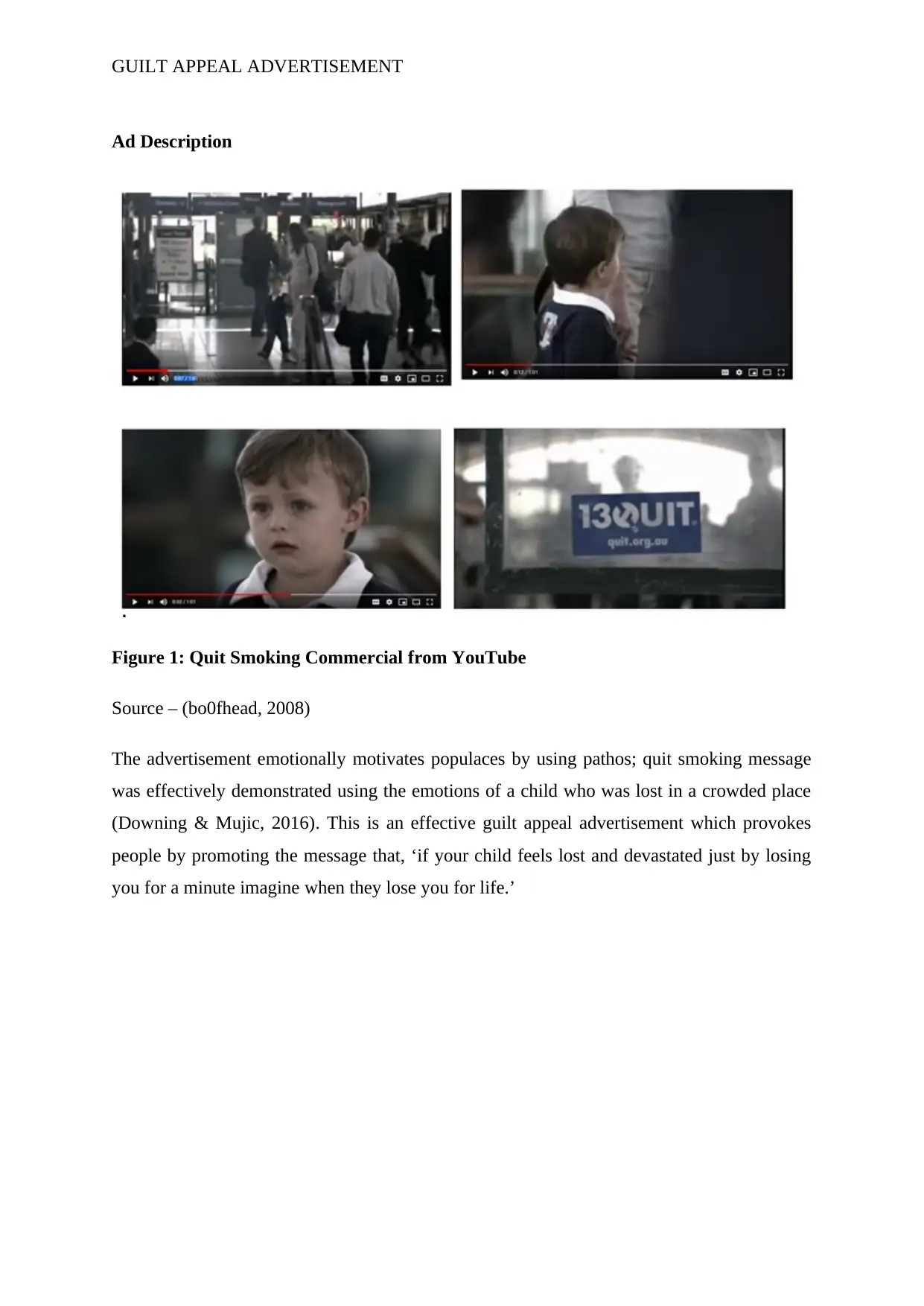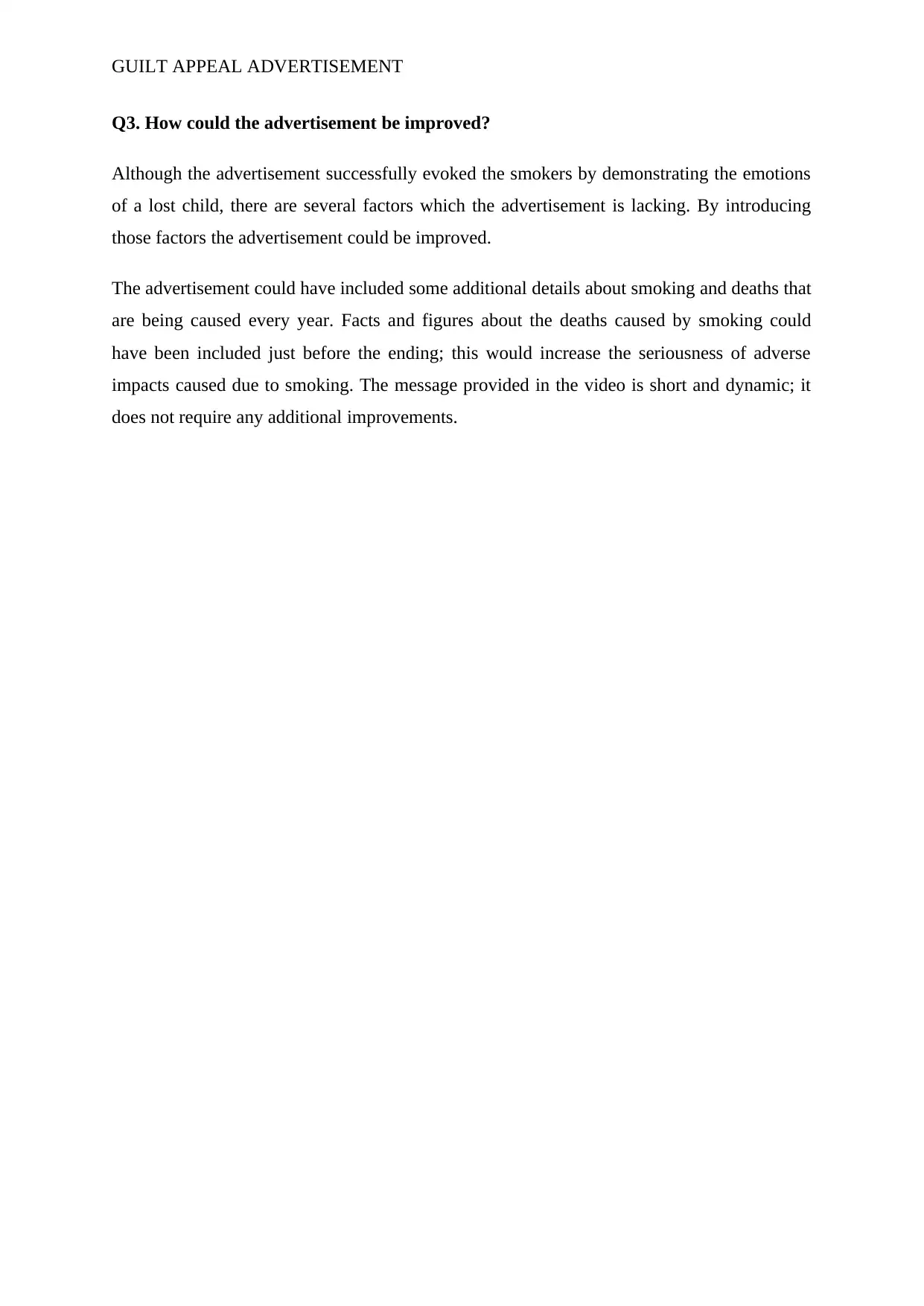Analyzing a Quit Smoking Ad: The Power of Guilt Appeal in Ads
VerifiedAdded on 2023/01/17
|5
|691
|42
Essay
AI Summary
This essay provides an analysis of a quit smoking advertisement that utilizes guilt appeal to evoke emotions and persuade viewers. The advertisement features a child who is lost in a crowded place, drawing a parallel to the potential loss a child would experience if their parent were to die from smoking-related illnesses. The essay identifies cues within the advertisement that contribute to its effectiveness, such as the child's emotional distress and the poignant message linking temporary loss to permanent loss. It evaluates the advertisement's effectiveness based on factors like exposure, attention, comprehension, attitude change, and action, concluding that the ad successfully conveys its message and influences viewers' attitudes towards smoking. Furthermore, the essay suggests potential improvements, such as incorporating statistics about smoking-related deaths to enhance the advertisement's impact and seriousness. This analysis provides insights into the strategic use of emotional appeals in advertising and its potential to influence public health behaviors. Desklib offers a wealth of similar resources, including solved assignments and past papers, to support students in their academic endeavors.
1 out of 5






![[object Object]](/_next/static/media/star-bottom.7253800d.svg)